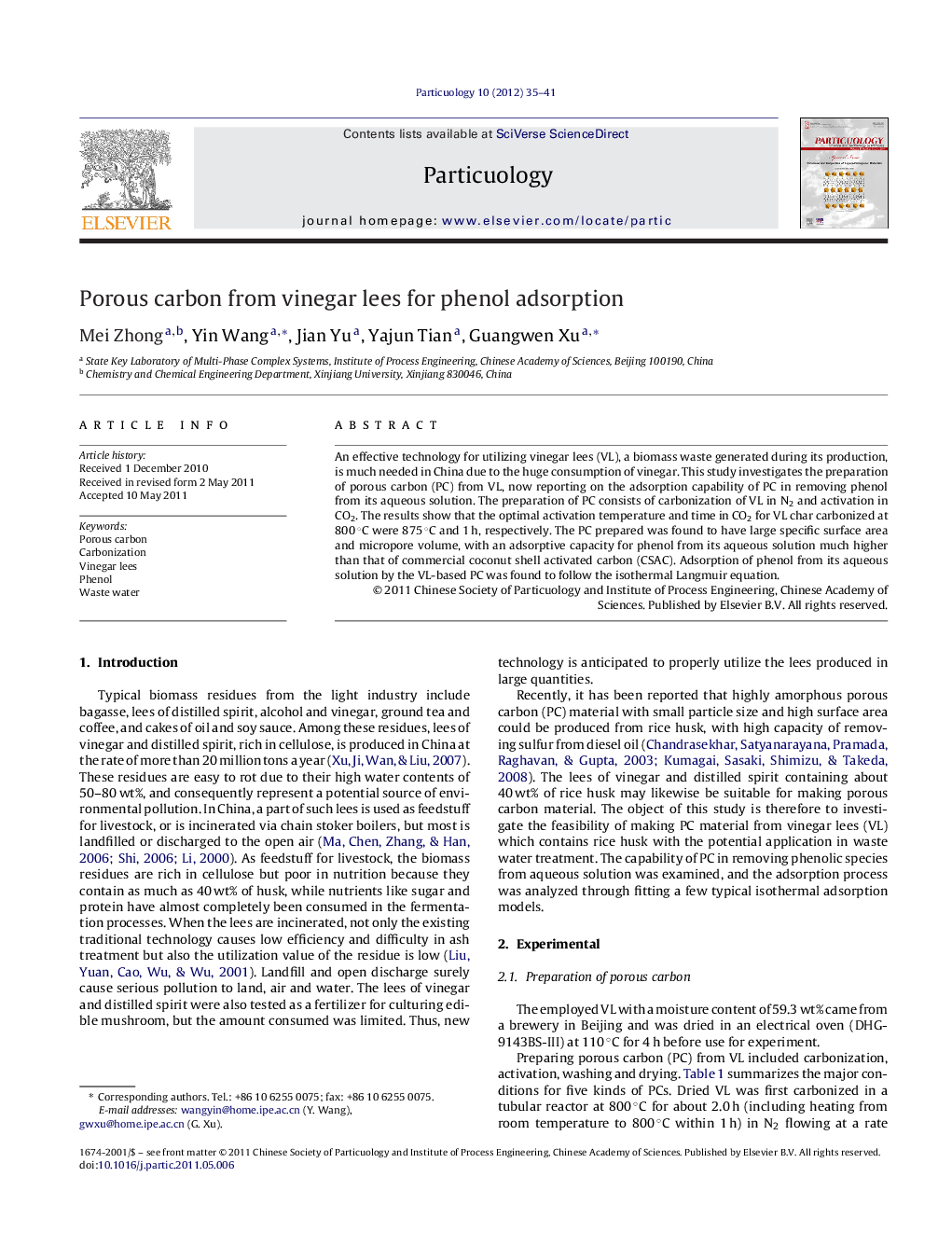| Article ID | Journal | Published Year | Pages | File Type |
|---|---|---|---|---|
| 672266 | Particuology | 2012 | 7 Pages |
An effective technology for utilizing vinegar lees (VL), a biomass waste generated during its production, is much needed in China due to the huge consumption of vinegar. This study investigates the preparation of porous carbon (PC) from VL, now reporting on the adsorption capability of PC in removing phenol from its aqueous solution. The preparation of PC consists of carbonization of VL in N2 and activation in CO2. The results show that the optimal activation temperature and time in CO2 for VL char carbonized at 800 °C were 875 °C and 1 h, respectively. The PC prepared was found to have large specific surface area and micropore volume, with an adsorptive capacity for phenol from its aqueous solution much higher than that of commercial coconut shell activated carbon (CSAC). Adsorption of phenol from its aqueous solution by the VL-based PC was found to follow the isothermal Langmuir equation.
Graphical abstractThe optimal conditions for preparing porous carbons (PCs) with high specific surface area were: carbonization at 800 °C for 1.0 h in N2 followed by activation at 875 °C for 1.0 h in CO2. The PC thus prepared has higher adsorptive capacity than commercial coconut shell activated carbon for phenol removal from its aqueous solution.Figure optionsDownload full-size imageDownload as PowerPoint slide
